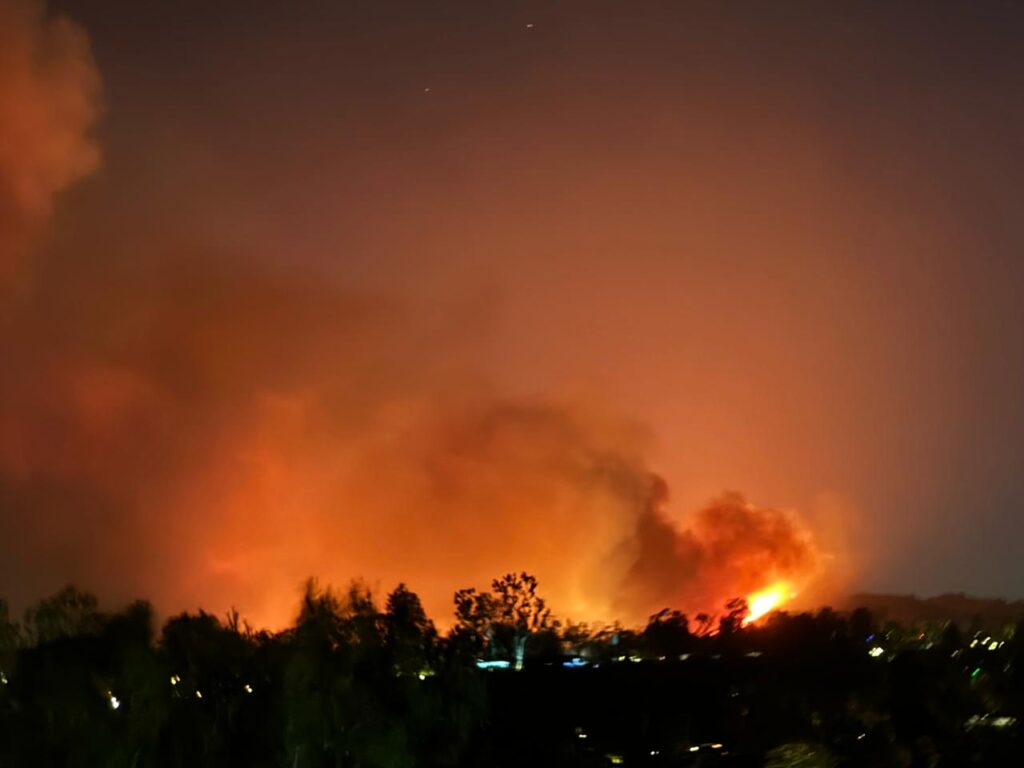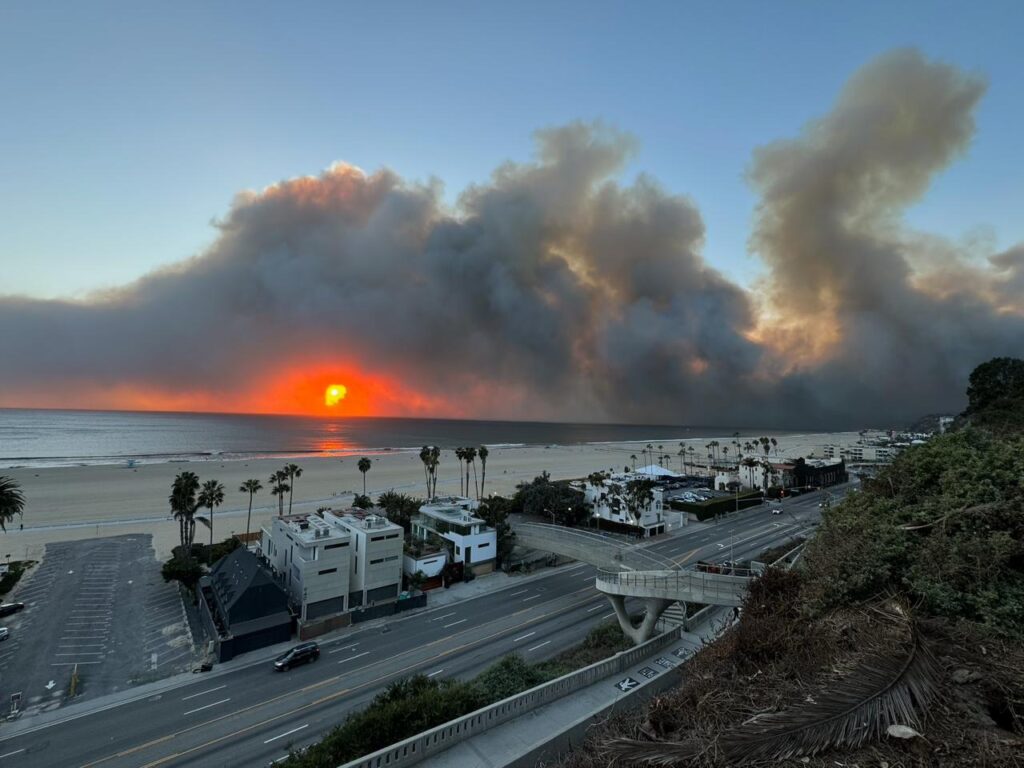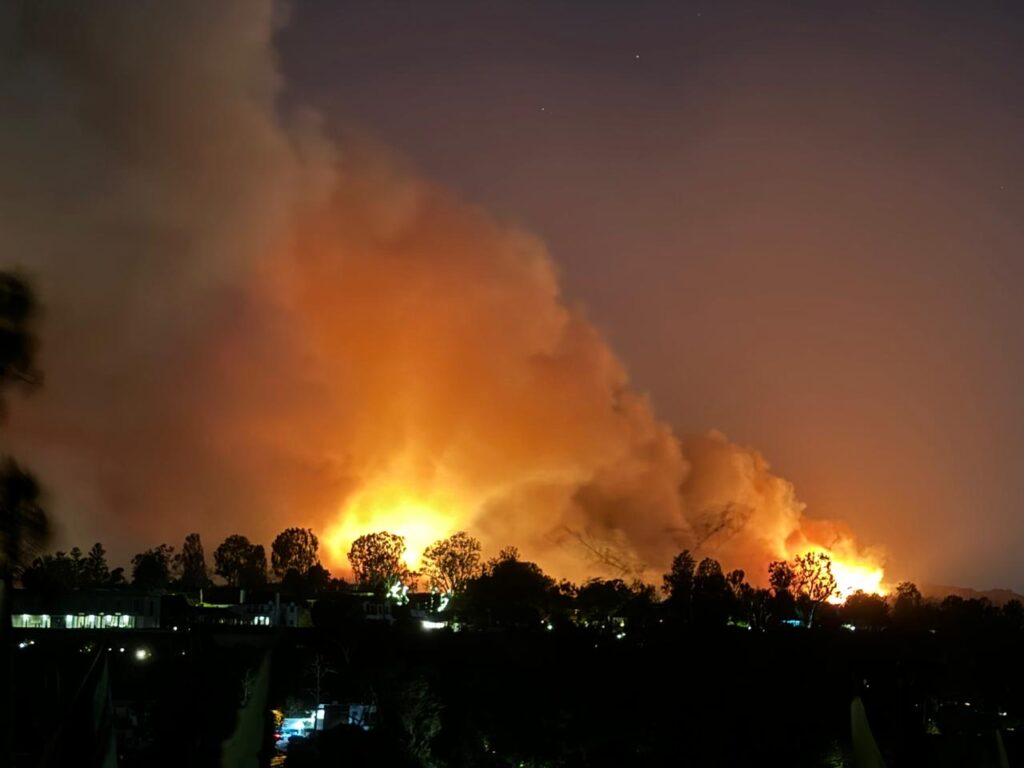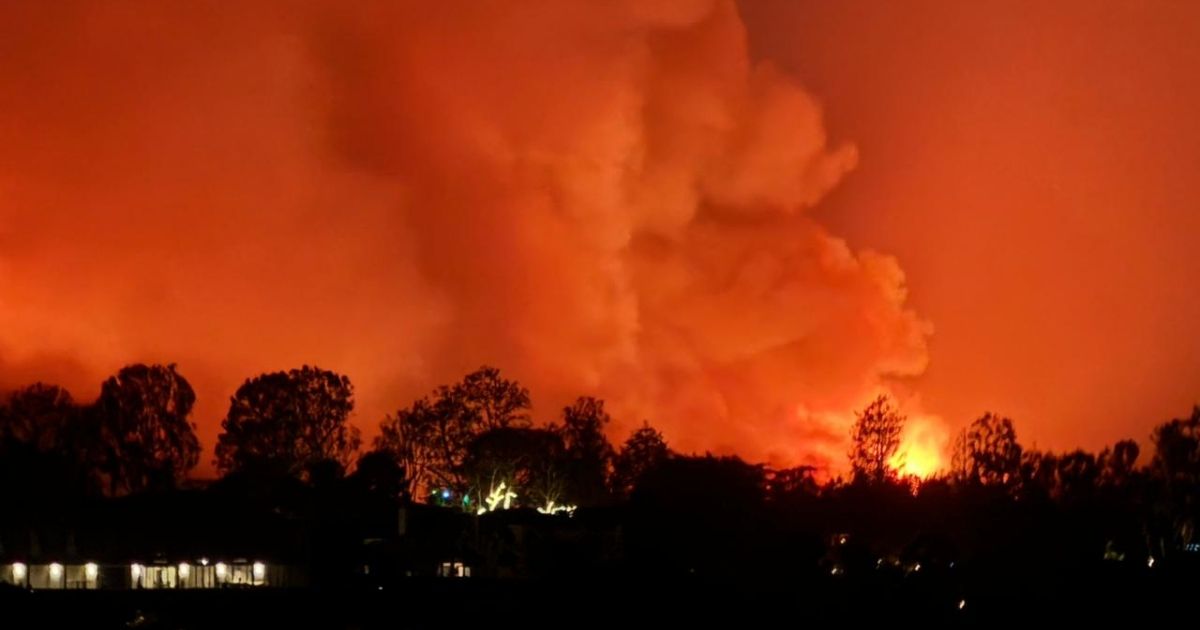California is on fire, and the flames aren’t just destroying forests and homes—they’re burning through any illusions we may still have about the safety of our planet. This year’s wildfires are among the largest and most destructive in the state’s history, with entire towns turned to ash and toxic smoke choking millions. The skies are dark, the air is unbreathable, and the message is clear: this is not normal, and it’s not going to stop.
This isn’t just a California problem. Around the world, disasters like these are becoming terrifyingly common. Floods, hurricanes, heatwaves, and wildfires are no longer “natural” disasters—they are man-made, supercharged by climate change and global warming. The scale of devastation over the past decade has left countries reeling, and the warnings scientists have issued for years are no longer theoretical. We are living in the age of climate crisis.

California: A State Under Siege
In California, the flames rage on, fueled by high winds, dry vegetation, and record-breaking heat. Communities are being evacuated in droves, leaving people to wonder if they will have a home to return to. One resident from Los Angeles described the chaos:
“Thank you for checking in. I’m doing okay. For the first time today, the fires have been somewhat contained with significant air support, but strong winds are expected to return tonight and continue until Wednesday. The air remains toxic, with ash falling everywhere like rain, and even our water sources are now polluted with toxins. Many evacuation orders are still in place, and my office has no power due to widespread downed power lines. I’m hoping the situation in LA improves soon. As a city, we are starting to wake up to the immense loss and face the harsh reality of what has happened. Right now, everyone feels numb.”
This numbness is a sentiment felt not just in California but across the world as disasters of this scale become increasingly routine.

A Decade of Global Disasters
Over the past ten years, our planet has endured relentless destruction. Entire cities have been submerged by floods in Pakistan and Germany. Coastal villages in Asia and Africa have been wiped out by cyclones and hurricanes. Blistering heatwaves have dried up rivers in Europe and killed crops in South America. Massive wildfires have ravaged Australia, the Amazon, and Siberia.
The connection between these events is undeniable: a rapidly warming planet is pushing natural systems beyond their limits.
The Science of the Crisis
Climate change isn’t just a looming threat—it’s here, and its fingerprints are all over these disasters. Rising global temperatures dry out vegetation, turning forests into tinderboxes. Warmer oceans feed stronger storms, and melting glaciers raise sea levels, intensifying floods. Heatwaves are hotter, longer, and more widespread than ever before.
What was once considered “extreme weather” is now becoming the norm. Scientists have been warning about this for decades: if we continue on this path, these disasters will only get worse, more frequent, and more deadly.
The Human and Environmental Cost
The toll of these disasters is immeasurable. Lives are lost, families are displaced, and communities are left shattered. For many, the air they breathe, the water they drink, and the land they call home are no longer safe. Wildlife is being pushed to the brink, and ecosystems are collapsing under the pressure.

Economically, the cost of rebuilding is staggering, draining resources that could have been used for sustainable development. The long-term mental and emotional scars left by these disasters are often overlooked but deeply felt.
A Global Responsibility
California’s wildfires, like floods in Pakistan or droughts in Africa, are a global problem. The solutions must also be global. It’s no longer enough to talk about reducing emissions or planting trees—action is needed now. Governments, corporations, and individuals must work together to transition to renewable energy, protect vulnerable ecosystems, and build resilience to the impacts we can no longer avoid.
A Call to Action
The fires in California are more than a disaster—they’re a warning. The planet is reaching its breaking point, and the window for meaningful action is closing. As one witness in Los Angeles said, “We are starting to wake up to the immense loss and face the harsh reality of what has happened.”
That reality doesn’t have to be our future. But the time to act is now—before the next fire, the next flood, or the next storm takes even more from us. This is our moment to choose: let the world burn or fight to save it. The choice couldn’t be clearer.
Composed by:
InnoHEALTH magazine digital team

